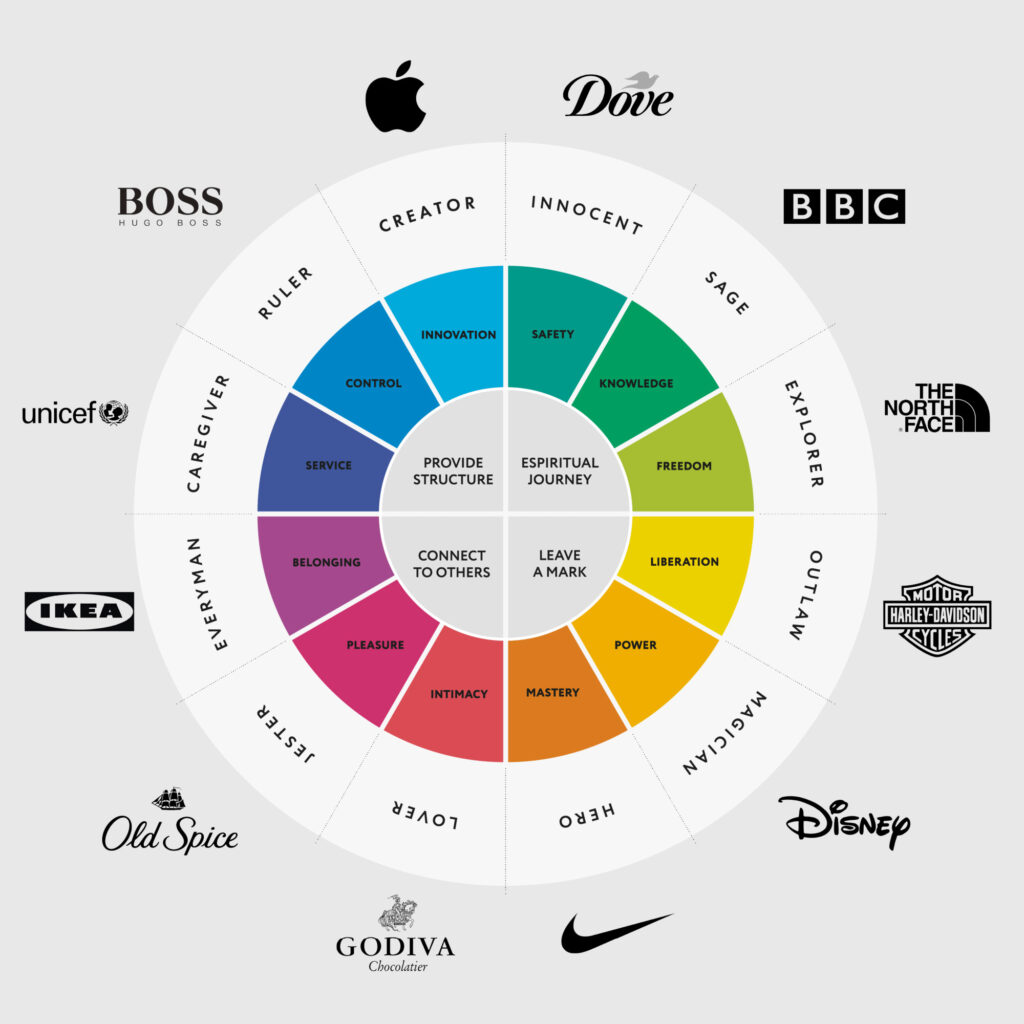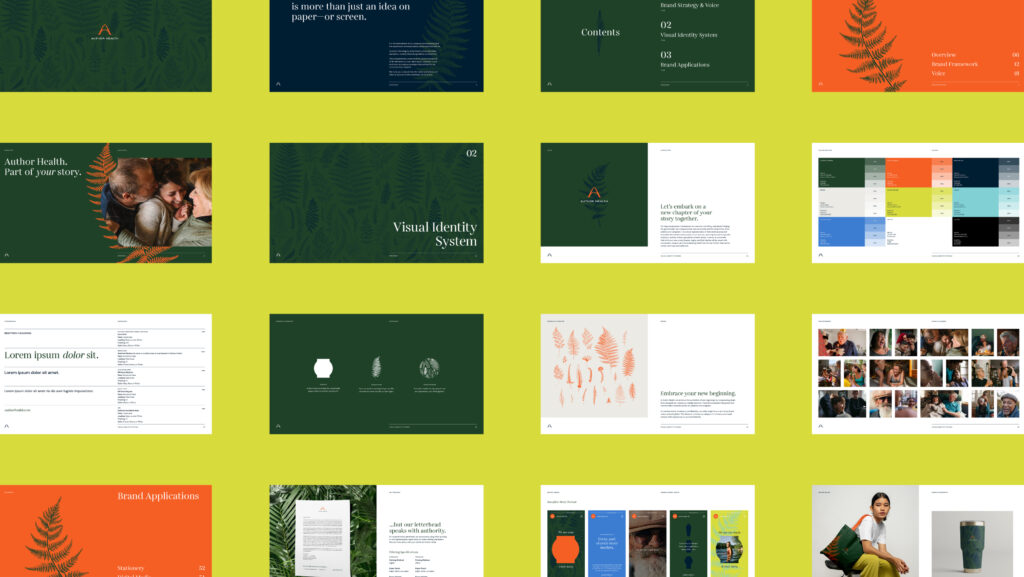Branding 101: How to Meaningfully Define Brand Personality

Your brand distills your company’s purpose and story into its visible form. The public interacts with your brand before it ever learns more about your offering, with the harsh reality that some may never go past a surface understanding of your brand—unless you give them a compelling reason to learn more.
You may have heard the phrase “brand personality” emerge during marketing discussions, PR ideation, or even when planning your fundraising pitches. Have you ever wondered what it really means and why it matters? When you hire an agency, what can you expect them to deliver when it comes to “brand personality”?
There is no one-size-fits-all approach to brand work, but these efforts do have a methodology to them. Success requires a systematic approach to leveraging every possible advantage—and a distinct brand personality is one of them. Defining brand personality not only serves to refine a competitive edge but can also yield insights that feed multiple marketing directions.
Key features of brand personality
Brand personality is the human qualities that set apart a business’ identity and its associated experiences. Every time you’ve interacted with a brand, you’ve likely first recognized its personality and how it makes you feel.
How does personality relate to brand? Brand is the sum total of values, attributes, and consumer reputation tied to a business. Personality is a subset of that, reflecting human traits that help consumers and investors interact with the business.
The biggest reason why this matters is that people favor the familiar. No experience is quite as familiar as engaging with another human. We all form impressions of others based on their behaviors, traits, and communication styles; these are the same attributes we may associate with brands. These habits are well-characterized by behavioral psychology, which details cognitive bias, social identity theory, and emotional resonance.
So, by designing a brand with familiar, likable traits for a leader in your industry, you can build rapport with your target audience more quickly and effectively.
You must remember that people prefer what they can readily understand and recognize. The more human your brand feels—with positive traits that are attractive, relatable, and sometimes aspirational—the easier it will be for people to connect with you and remain loyal. People have a sense of how to interact with others, and if they readily recognize them positively, it’s even easier to focus on their messages or ideas.
After you define your brand personality, you can then make sure to stay consistent with it across all touchpoints. Marketing takes place across more channels than ever, presenting more opportunities for connection—but also more potential deviations from the outlined brand strategy. You must show up in the same way across all media so that you remain recognizable and authentic.
Aside from your company’s story and values, you need to be specific about what differentiates you from the rest of your industry. You don’t have to repeat these differentiators all the time. Still, you want your entire organization—and your branding agency—to be clear about them so that every marketing action you take is in alignment.
Anatomy of brand personality
When it comes to developing a brand personality, there is an actual method to the madness. Regardless of industry or scale, there are several core components to consider as you define the traits and qualities you want associated with your brand.
It’s important to keep these four elements in mind as you develop your brand personality, whether you choose to do this in-house or by working with an agency like C42D. You can hold the process accountable to be both comprehensive and well thought-out, covering your business objectives and needs.

1. Archetype
A brand archetype is a symbolic representation or persona that embodies a brand’s fundamental characteristics, values, and traits. This approach is inspired by famed psychoanalyst Carl Jung’s theory of archetypes, which suggests that universal symbols and themes exist within the collective human unconscious. Brand archetypes serve as fundamental templates for defining and communicating a brand’s identity, tapping into perceptions we may not even all know to articulate.
Each archetype, such as names like “The Hero,” “The Sage,” or “The Rebel,” carries distinct attributes and behaviors that resonate with specific consumer aspirations, desires, and values. By aligning with a particular archetype, brands can establish a clear and compelling personality that evokes emotional connections and resonates with their target audience, ultimately driving brand loyalty and engagement. This exercise also helps set brands apart from their competitors.

2. Values and beliefs
As you work through defining your brand, how do you make your decisions? Whether you are conscious of it or not, values and core beliefs are driving your decision-making. A thoughtful approach involves naming these values and beliefs while developing the brand personality. Again, just like humans, brands can be characterized by their ideas, ethics, and philosophies.
This step is critical if you want to come across as authentic, credible, and trustworthy. If your audience feels like their values align with yours, you are more likely to establish resonance and relevance with your messaging.

3. Tone of voice
Like how people express themselves through their tone of voice, brands can convey their identity through the verbal expressions they choose to use. Whether it’s formal and authoritative, friendly and conversational, or playful and irreverent, the tone of voice sets the overall mood and establishes a connection with the audience. Everyone knows both the satisfaction of a smooth voice that fits or the weird feeling you get when voice is misaligned or forced (like when brands try to be funny, but it doesn’t make sense for the moment).
Consistency in tone across all communication channels helps to reinforce brand identity and build trust with consumers while also ensuring clarity and coherence in messaging. By aligning the tone of voice with the brand’s personality traits and values, brands can evoke specific emotions, resonate with their target audience, and differentiate themselves from competitors.

4. Visual identity
This is likely what first comes to mind when you think of brand. Visual identity includes all the graphical elements like logos, colors, and typography that collectively shape consumer perceptions and emotions.
- Logos serve as the visual symbol of a brand, instantly recognizable and synonymous with its identity and values.
- Colors evoke specific emotions and associations; for instance, vibrant colors may convey energy and youthfulness, while muted tones evoke sophistication and tranquility.
- Typography further reinforces brand personality, with different fonts conveying varying degrees of authority, friendliness, prestige, or creativity.
Together, these visual elements form a cohesive brand identity that communicates personality traits, values, and positioning to consumers. While the other elements of brand personality are a bit easier to name outright because they are so directly tied to your mission and purpose, visual identity might take a bit more work. You will both need to understand your competitive landscape while also figuring out what makes sense for your brand’s personality and niche.
One advantage of working with an agency to pinpoint your brand personality is that we have frameworks and processes in place to advance each of these components according to a timed plan.
Our experience helps you allocate resources effectively to achieve a distinct, competitive brand personality and the documentation needed to align your teams.
Browse our Case Studies and get to know some of our existing work with brands like Midday and Kindbody.


